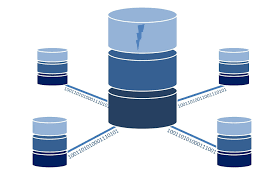Working with database management systems (DBMS) like MySQL and PostgreSQL involves various tasks related to database administration, data manipulation, and query execution. Here are some key aspects of working with DBMS:
- Installation and Configuration:
Start by installing the DBMS software on your server or workstation. Follow the installation instructions provided by the DBMS vendor. Once installed, configure the DBMS by setting up parameters such as memory allocation, storage locations, network settings, and security options. - Database Creation:
After the installation and configuration, create a database within the DBMS to store your data. Use SQL statements or graphical interfaces provided by the DBMS to create the database schema, define tables, columns, primary and foreign keys, and other database objects. - Data Manipulation:
Perform data manipulation tasks such as inserting, updating, and deleting data within the database. Use SQL statements like INSERT, UPDATE, and DELETE to modify the data in the tables. Additionally, perform tasks like importing data from external sources, exporting data, and transforming data as required. - Querying and Retrieving Data:
Execute SQL queries to retrieve data from the database. Use SELECT statements to specify the columns and conditions for filtering data. You can retrieve data from one or multiple tables, apply joins, aggregate functions, sorting, and grouping operations. Understand the SQL syntax and the capabilities of the specific DBMS you are working with. - Indexing and Performance Optimization:
Optimize query performance by creating appropriate indexes on columns that are frequently used in search conditions. Analyze query execution plans and use tools and techniques provided by the DBMS to identify and resolve performance bottlenecks. Consider indexing strategies, query optimization techniques, and database configuration parameters to improve overall performance. - Security and Access Control:
Implement security measures to protect the database and its data. Define user accounts with appropriate privileges and permissions. Enforce authentication mechanisms such as passwords or integration with external authentication systems. Set up access control rules to restrict user access based on roles or specific permissions. Monitor and audit user activities to ensure compliance and data security. - Backup and Recovery:
Regularly back up the database to protect against data loss and ensure recoverability. Use built-in backup utilities or third-party tools to create backups of the database. Establish backup schedules and retention policies based on business requirements. Test the backup and recovery procedures periodically to ensure their effectiveness. - Monitoring and Maintenance:
Continuously monitor the health and performance of the DBMS and the databases it manages. Monitor system resources, query execution times, and database statistics. Set up alerts and notifications for critical events or performance thresholds. Perform routine maintenance tasks like database optimization, index rebuilds, and database reorganization to maintain optimal performance. - High Availability and Fault Tolerance:
Implement high availability and fault-tolerant mechanisms to ensure continuous access to the database. This may involve techniques like database replication, clustering, or mirroring, depending on the capabilities of the DBMS. Set up failover mechanisms and disaster recovery plans to minimize downtime and data loss in the event of hardware or software failures. - Upgrades and Patching:
Stay up to date with the latest releases, patches, and security updates provided by the DBMS vendor. Plan and execute upgrades or patch installations following the recommended procedures. Test the upgrades or patches in a non-production environment before applying them to the production environment.
Working with DBMS requires a solid understanding of SQL, database concepts, and the specific features and functionalities of the chosen DBMS. Refer to the documentation, resources, and community forums provided by the DBMS vendor for detailed information and best practices specific to the DBMS you are using.
SHARE
